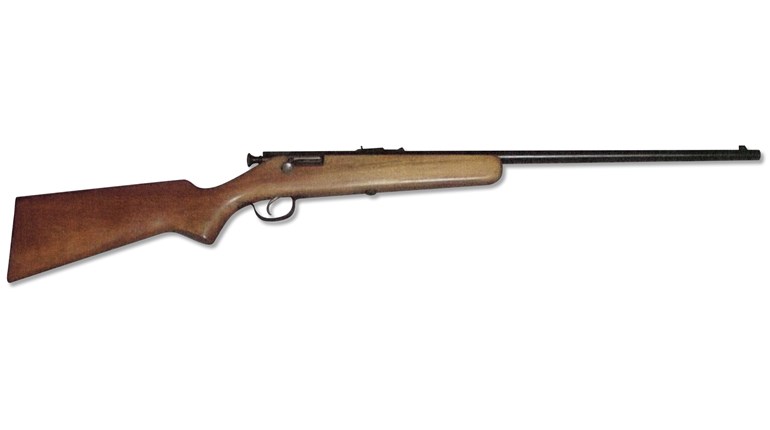
From the very beginning, practical shooting, in spirit, has been the proving ground for tactical gear and doctrine, trading the adrenaline dump of a life-or-death situation for the induced stress of the competitive arena.
Along the way, practical shooting has grown and matured. It now offers something for everyone, from disciplines and events ranging from heavily restricted to wide open. And it's in these open divisions where the once-Spartan shotgun has evolved almost beyond recognition. Nowhere is this more evident than in 3-gun—the fastest-growing segment of practical shooting—where an entire cottage industry has emerged to transform semi-automatic shotguns into high-volume, high-performance, precision machines.
There are a lot of ways to get a shotgun to this point. For the most part, savvy competitors start with a basic or tactical version of a proven shotgun design, then build it up with specialized aftermarket components.
"Remington and Benelli are top of the list," said world-champion shooter Bruce Piatt. "FNs will be there soon, too, as will the Saiga box-fed shotguns. There are two main differences between the Remingtons and Benellis. Remingtons are all steel, thus heavier, which can be good or bad. The extra weight sucks up recoil, but some say it makes it harder to handle or swing fast. Benellis and FNs use alloy frames and are lighter, making them kick harder but swing faster. I guess it comes down to personal preference."
While top professional shooters are extremely aware of weight and balance, there are technical and mechanical considerations as well. From the type of gas system to more subtle intricacies, operation and function play major roles in deciding what shotgun to use.
As different as 3-gun shotguns can be, from their method of operation to their unique handling characteristics, they all have one thing in common when used in the Open Division: They are heavily customized and accessorized. While the process can cost thousands of dollars on the high end, the average shooter can still get in the game without breaking the bank.
"The difference from Limited to Open is the use of electronic sights, magazine capacity and speed loaders," Piatt said.
"A shooter can take his Limited shotgun, put a longer mag tube on it, install a bolt-on Armstec speed loader, mount a Burris SpeedBead on his gun and be ready to shoot Open—all without permanently modifying his gun. The shooter could go further and screw in a combination compensator/choke that is available from several sources, once again without permanent modification to the gun."
For most recreational shooters, finding the right accessories or gunsmith for this type of work can be daunting, as most local gun shops don't specialize this heavily. According to Piatt, many professional shooters use John Paul of JP Enterprises, Benny Hill at Triangle Shooting Sports or R&R Targets to customize their competition guns. For those wishing to do the work themselves, the basic kit for building an open-class shotgun can be found on the web, from individual accessory manufacturers to retailers like Brownells. Michael Voigt, United States Practical Shooting Association president, who is also a world-class shooter, pointed to www.speedshooter.com as an excellent resource for competition accessories.
The name of the game in the Open Division is firepower. That starts with an extended magazine tube, which is arguably the most common of all accessories. Several options are available through Brownells and other suppliers. While most shooters eventually upgrade, some shotgun manufacturers include extended tubes on certain variants.
The next level is the speed loader, with popular models available from TecLoader and Armstec. Worn in a belt pouch, speed loaders make reloading a shotgun nearly as easy as executing a magazine change with a rifle. Watching the pros execute this maneuver is one of the subtle highlights of practical shooting.
To get the most out of speed loaders, shooters often install a funnel. This accessory serves the same purpose as a flared magazine well on a pistol, providing the surface area and angle to readily guide the speed loader into the magazine tube. Arredondo Accessories has bolt-on units for Remington or Benelli shotguns that retail for about $150.
For optics, shooters tend to go one of two ways. Like Piatt, one can simply install a Burris SpeedBead. Others gravitate toward tiny reflex sights such as the JP Enterprises JPoint, Docter Red Dot sight or Trijicon RMR.
Of course, there is much more. From guide rods for speed loaders, to bolt-handle upgrades, if there is a functioning part on a shotgun, chances are the world of open-class shooting has found a way to improve upon it.
Watching pros like Piatt or Voigt run an Open Division shotgun can be pretty intimidating. But with a few basic accessories, you can step to the firing line and compete in 3-gun's exciting anything-goes class, too. And while you or I may not challenge the pros anytime soon, with the right gear and a little practice, we can all have just as much fun.






































